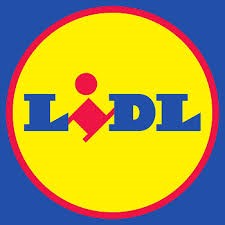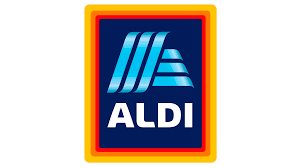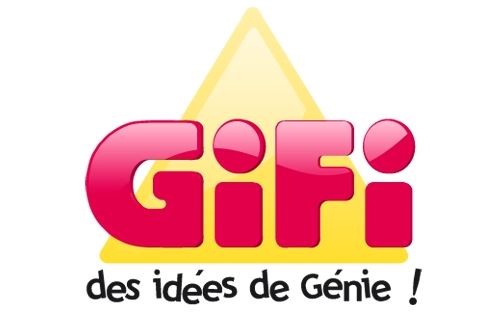Synthèse
The global Large Food Superstores (GSA) market is experiencing significant growth, with an estimated value of US$5,600 billion in 2020 and a forecasted CAGR of 4% to reach US$7,369 billion by 2027. This expansion is driven by rapid growth in emerging markets, particularly China, as well as increased consumer spending power. Supermarkets, which are preferred by 75% of French consumers for their food shopping, are gradually gaining market share over hypermarkets.
The hard discount sector, led by Lidl and Aldi, accounts for just under 11% of the market in France, reflecting the consumer trend towards value and quality over low prices alone. The French GSA market is also witnessing a tendency towards consolidation, with industry giants acquiring smaller hard discount stores. The trend towards upmarket and digital consumer preferences is reshaping the retail landscape, as seen in initiatives like Lidl's modernization and move towards a "soft discount" model.
Despite the decline in hypermarket dominance, which accounts for more than 58% of market share, the market dynamic continues to evolve with consumer habits, keeping supermarkets as key players in the food retail sector.
Main Trends Shaping Food Retail Demand in the French Market
The French food retail market, specifically the segment of Large Food Superstores (GSA), has been undergoing a series of transformative trends. Despite a 0.4% decline in the turnover of food superstores , there remains a strong consumer preference for supermarkets, which collectively hold a significant 53% of the market share as of the same year. Supermarkets are gaining ground at the expense of hypermarkets; consumers are increasingly drawn to the convenience and the perceived better adaptation they offer in line with changing shopping behaviors. A survey revealed that about half of the households considered their monthly food budget, which falls between roughly 200 to 500 euros, as excessively high. Nevertheless, while the budget for food remains mostly stable, with 39% of respondents not increasing their budget, nearly half of the consumers raised it, underscoring the essentiality of food consumption.
Meanwhile, the hard discount sector, dominated mainly by Lidl and Aldi, accounts for just under 11% of the GSA market. When choosing where to shop, French consumers prioritize factors like the quality-to-price ratio (52%), availability of the needed product (50%), store location (45%), and the presence of high-quality fresh products (45%). Interestingly, price alone is no longer the sole determinant as consumers become more discerning. Emerging trends also point to a demand for shopping comfort, healthiness, and ethical considerations. Consumers are shifting towards organic, eco-responsible products with clear information transparency. Fresh, local, and minimally processed foods attract greater interest, with organic products experiencing a 14% increase in purchase frequency. These preferences are even more pronounced among younger consumers, who are also driven by the convenience and time-efficiency of ready-to-eat meals.
The hard discount market, which witnessed a decline with the closure of 25% of discount stores between 2014 and mid-2019, sees a battle for dominance mainly between Lidl, with plans to open additional stores, and Aldi, which has recently acquired a large number of Leader Price stores. This consolidation denotes a trend towards a more concentrated market structure. Recognizing the stiff competition from established retailers, hard-discount stores such as Lidl embarked on a strategic pivot towards a "smart discount" model in 2012. This strategy entailed modernizing stores, offering higher-quality goods including fresh produce and private-label brands, enhancing shopping comfort, investing in social media branding, and maintaining
Major Contenders in the French Food Retail Landscape
- Traditional Supermarket and Hypermarket Giants Within France's dynamic food retail sector, certain established giants have carved out substantial market shares through a variety of retail formats, maintaining a strong presence throughout the country. Among these, renowned groups such as Leclerc and Carrefour stand out, with their diverse array of hypermarkets and supermarkets catering to every need of the French consumer. Leclerc's strategic emphasis on private label brands geared towards affordability, local products, and organic offerings has solidified its position in the market.
- The Evolution of Hard Discounters The hard discount segment in France has undergone a remarkable transformation, spearheaded by two German heavyweights: Lidl and Aldi. These brands initially captured market interest with their no-frills, cost-effective approach offering a limited range of private label products. In the face of increased competition and shifting consumer preferences, Lidl initiated a significant shift in 2012 with its turn towards soft-discount or smart-discount retailing. The revamp of Lidl's image included enhanced store aesthetics and an upgraded product range featuring fresh, bio, and high-quality items. Lidl's investment in marketing and the clever use of social media campaigns, such as the limited-edition Lidl sneakers, have amplified its appeal in the public eye, resulting in an enriched customer experience and elevated position in the market.
- Consolidation and Growth Plans As the traditional hard discount model faces challenges, consolidation has become a theme in the sector. The Casino group, which previously owned the Leader Price brand, made a strategic move by selling a significant part of the business to Aldi, enabling the latter to expand its footprint and intensify competition against Lidl. Meanwhile, the Les Mousquetaires Group's hard discount brand Netto is not backing down amid these changes, with ambitious plans to establish 500 new stores, potentially disrupting the duopoly trend between Lidl and Aldi.
- New Entrants and Niche Players Specialist brands are also notable participants in the market, with Picard focusing on frozen goods and Biocoop specializing in organic offerings. Both have witnessed growth in their respective niches, responding to the evolving demands for convenience and sustainable, healthy food options. In addition to these, the Carrefour group has launched its own hard discount venture, Supeco, which has already made its mark in Spain and is now making inroads into the French market.
à la compréhension de ce marché
Détail du contenu
 Informations
Informations
- Nombre de pages : 30 pages
- Format : Version digitale et PDF
- Dernière mise à jour : 29/02/2024
 Sommaire et extraits
Sommaire et extraits
1 Market overview
1.1 Definition and scope of study
The hard discount concept, characterized by medium-sized stores focusing on food products at reduced prices, expanded significantly in France from the 1990s onwards. originally introduced in the country by German chains Lidl and Aldi, it was later adopted by major French retailers such as Netto and Leader Price.
However, since the 2010s, this model has encountered challenges on the French market. Its evolution has been so marked that it's questionable whether it's still appropriate to use the term "hard " to describe it. Nowadays, it's not uncommon to hear the terms SDMP (supermarkets with predominantly own-brand brands) or EDMP (retailers with predominantly their own-brand brands) used to describe these brands.
The global supermarket market is dynamic, and is expected to grow at a CAGR of 4.5% between 2022 and 2030. What's more, the Schwarz Group is the world's leading discount retailer. As for the French food retail market, it operates as an Oligopoly, with 3 major groups(E.Leclerc, Carrefour and Les Mousquetaires) sharing nearly 60% of total sales.
In France, the discount market is varied and made up of many players, both food and non-food discounters . by way of illustration, according to an EY study, in 2023, the French people's favorite discount chain will be Action. The market is therefore very dynamic and very popular with the French, and even more so since inflation.
Discount chains have been seeking to modernize over the last ten years to attract more and more customers. The arrival of a new range of first-price products on the shelves in 2024 could continue to attract new customers.
1.2 The global supermarket market: overview and main characteristics.
Research and Markets estimates the global supermarket and hypermarket market at $*,*** billion in ****. This market is expected to grow at a CAGR of *.*% between **** and ****.
Global food retail market size World, ****-****, in billions of dollars Source: ****
This is a dynamic market that should see continued growth over the coming ...
1.3 The French food superstore market
The food retail market is worth around*** billion eurosin France. Some **,*** French towns have a food store.
The French market isoligopolistic marketa few major groups share the bulk of the market:
Market shares of food retailers France, **** (***), in % and points Source: ****
E.Leclerc remains the market leader, with market share up ...
2 Demand analysis
2.1 French household food consumption habits
How often do the French go to the supermarket? France, ****, %, % source: opinionWay
The majority of respondents visit supermarkets once a week(***), underlining the prevalence of regular visits to make essential food purchases. Also, **% of respondents say they never visit a supermarket, which may reflect the use of alternative purchasing channels such ...
2.2 The French perception of discount
The qualities of hard discount chains France, ****, %, %, %, %, %, %, %, %, %, %, %, % Source: ****
The graph above shows that **% of respondents perceive these chains as offering good value for money, underlining the importance of the economic factor in their purchasing choices. Similarly, **% consider these brands to bethe least expensive, confirming their reputation as suppliers of competitively priced ...
2. 3 Inflation makes hard discount stores more attractive
Inflation rate trend France, ****-****, %, %, %, %, %, %, %, %, %, %, %, %, % Source: ****
Inflation will rise sharply in ****, to*.*%. **** was also a year of high inflation, despite a slight decrease compared to ****. This inflation has had a major impact on supermarket prices.
Impact of inflation on French consumer behavior France, ****, %, % Source: ****
With the rise in food prices, consumption ...
3 Market structure
3.1 Value chain
Source: ****
Hard-discount food chains are fairly autonomous in terms of sourcing, with most of the products available in stores being the chain's own brands. Once the products have been produced, they are sent to the group's warehouses and logistics platforms before being distributed to the chain's stores and finally sold to ...
3.2 Number of companies and number of employees
Number of food stores by format France, ****, by value Source: ****
As the graph shows, the majority of stores in France are convenience stores. Moreover, the hypermarket format is the least represented in France. However, it should be noted that the hypermarket is much larger in terms of sales area, ranging from ...
3.3 Will the discount market soon be saturated?
The growing popularity of hard-discount stores in France has aroused keen interest among suppliers looking to enter this lucrative market segment. However, this positive momentum could soon come up against a major obstacle: market saturation. Indeed, despite the attractive opportunities offered by the small-price sector, competition is intensifying as new brands ...
4 Offer analysis
4.1 The hard-discount food chain business model
The traditional hard-discount business model is based on a number of criteria:
A very low diversity of products on offer, focusing on the basic products that consumers buy on a daily basis. So, * product = * need, i.e. one - well-chosen - reference is offered for each type of product. This enables ...
4.2 Non-food discounters
In the French hard discount landscape, the diversity of chains is not limited to food discounters. In fact, alongside food giants such as Lidl and Aldi, a multitude of non-food discounters are also thriving, offering a varied range of products from household goods to DIY, home decoration and fashion.
These non-food ...
4.3 Discounters launch first-price product ranges
Lidl is currently undertaking a revolution in its offer by launching a range of first-price products on its shelves. This move is designed to fill a gap in its assortment compared with competitors such as Leclerc, which already has an extensive range of first-price products with its Eco+ brand, for example. ...
4.4 Discounters looking to modernize and enhance their image
The shift to smart and soft discount was launched by Lidl in ****
In ****, at a time when hard discount was losing market share, Lidl launched a vast plan to modernize its stores, making them more welcoming - and putting an end to the concept's "downmarket" and austere image - as well ...
5 Regulations
5.1 The law on the modernization of the economy, an advantage for discounters
The French Law on the Modernization of the Economy, commonly known as the LME, was officially promulgated on August *, ****. Its main aim is to remove obstacles hindering the development of certain sectors, thereby promoting job creation and lowering prices.
The provisions of the Law on the Modernization of the Economy cover ...
5.2 Anti-waste law for a circular economy (Loi AGEC)
The mass retail sector is impacted by the AGEC law on several points: food waste with unsold products and the use of plastic with the reduction of single-use plastic packaging.
Management of unsold goods:
The mass retail sector is responsible for nearly **% of food waste in France. in France, ** million tonnes ...
5.3 Loi Descrozaille
The Descrozaille law (***).
As soon as it comes into force, promotions for non-food products may not exceedexceed **%. Initially presented as a measure to protect manufacturers in their negotiations with supermarkets, this law has not met with unanimous approval.french people rely heavily on promotions to reduce their spending.
Although our study ...
6 Positioning the players
6.1 Player segmentation
- Lidl France
- Aldi
- E.Leclerc
- Intermarché ITM Les Mousquetaires
- Système U
- Auchan groupe
- Action France
- Gifi France
- Netto (Intermarché les mousquetaires)
- Aldi France
 Liste des graphiques
Liste des graphiques
- Taille du marché mondial des la grande distribution alimentaire
- Classement des plus importants groupes de grande distribution selon leur chiffre d'affaires
- Principaux détaillants discounts dans le monde par ventes de produits d'épicerie
- Parts de marchés des distributeurs alimentaires
- Evolution du chiffre d'affaires des hypermarchés et supermarchés
Toutes nos études sont disponible en ligne et en PDF
Nous vous proposons de consulter un exemple de notre travail d'étude sur un autre marché !
Dernières actualités
Entreprises citées dans cette étude
Cette étude contient un panorama complet des entreprises du marché avec les derniers chiffres et actualités de chaque entreprise :
 Choisir cette étude c'est :
Choisir cette étude c'est :
Accéder à plus de 35 heures de travail
Nos études sont le résultat de plus de 35 heures de recherches et d'analyses. Utiliser nos études vous permet de consacrer plus de temps et de valeur ajoutée à vos projets.
Profiter de 6 années d'expérience et de plus de 1500 études sectorielles déjà produites
Notre expertise nous permet de produire des études complètes dans tous les secteurs, y compris des marchés de niche ou naissants.
Notre savoir-faire et notre méthodologie nous permet de produire des études avec un rapport qualité-prix unique
Accéder à plusieurs milliers d'articles et données payantes
Businesscoot a accès à l'ensemble de la presse économique payante ainsi qu'à des bases de données exclusives pour réaliser ses études de marché (+ 30 000 articles et sources privées).
Afin d'enrichir nos études, nos analystes utilisent également des indicateurs web (semrush, trends…) pour identifier les tendances sur un marché et les stratégies des entreprises. (Consulter nos sources payantes)
Un accompagnement garanti après votre achat
Une équipe dédiée au service après-vente, pour vous garantir un niveau de satisfaction élevé. (+33) 9 70 46 55 00
Un format digital pensé pour nos utilisateurs
Vous accédez à un PDF mais aussi à une version digitale pensée pour nos clients. Cette version vous permet d’accéder aux sources, aux données au format Excel et aux graphiques. Le contenu de l'étude peut ainsi être facilement récupéré et adapté pour vos supports.
 Nos offres :
Nos offres :
the hard discount market | France
- Quels sont les chiffres sur la taille et la croissance du marché ?
- Quels leviers tirent la croissance du marché et leur évolution ?
- Quel est le positionnement des entreprises sur la chaine de valeur ?
- Comment se différencient les entreprises du marché ?
- Données issues de plusieurs dizaines de bases de données
Pack 5 études (-15%) France
- 5 études au prix de 75,6€HT par étude à choisir parmi nos 800 titres sur le catalogue France pendant 12 mois
- Conservez -15% sur les études supplémentaires achetées
- Choisissez le remboursement des crédits non consommés au terme des 12 mois (durée du pack)
Consultez les conditions du pack et de remboursement des crédits non consommés.
- 03/04/2024 - Mise à jour des données financières de l'entreprise Auchan groupe
- 03/03/2024 - Mise à jour des données financières de l'entreprise Gifi France
- 29/02/2024 - Ajout des informations de l'entreprise Aldi France
- 29/02/2024 - Ajout des informations de l'entreprise Netto (Intermarché les mousquetaires)
- 29/02/2024 - Ajout des informations de l'entreprise Gifi
- 29/02/2024 - Ajout des informations de l'entreprise Action France
- 02/01/2024 - Mise à jour des données financières de l'entreprise Auchan groupe
- 01/10/2023 - Mise à jour des données financières de l'entreprise Auchan groupe
- 14/06/2023 - Mise à jour des données financières de l'entreprise Auchan groupe
- 09/03/2023 - Mise à jour des données financières de l'entreprise Auchan groupe
- 21/02/2023 - Mise à jour des données financières de l'entreprise Lidl France
- 21/02/2023 - Mise à jour des données financières de l'entreprise E.Leclerc
- 21/02/2023 - Mise à jour des données financières de l'entreprise Intermarché
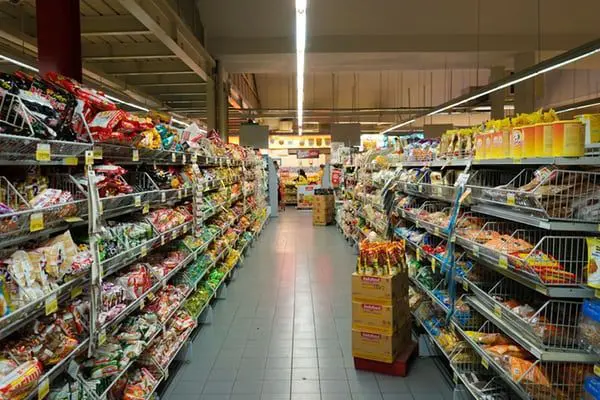





 Thierry Cotillard (Les Mousquetaires) : "Nous voulons devenir invulnérables" - 29/02/2024
Thierry Cotillard (Les Mousquetaires) : "Nous voulons devenir invulnérables" - 29/02/2024
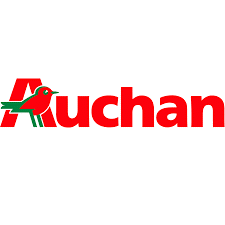 Auchan a connu un nouvel exercice « difficile » en 2023 - 22/02/2024
Auchan a connu un nouvel exercice « difficile » en 2023 - 22/02/2024
 Croissance de Système U via les centrales d'achat en Europe - 16/02/2024
Croissance de Système U via les centrales d'achat en Europe - 16/02/2024
 Action ouvre son 800e magasin en France à Aulnay-sous-Bois - 31/01/2024
Action ouvre son 800e magasin en France à Aulnay-sous-Bois - 31/01/2024
